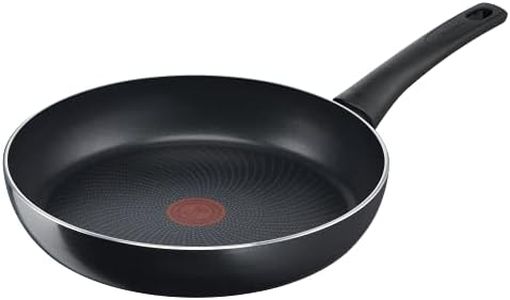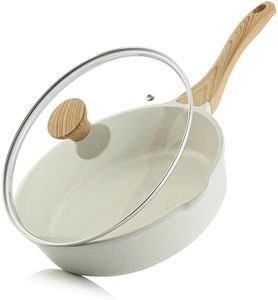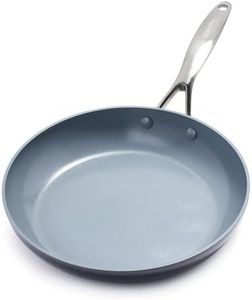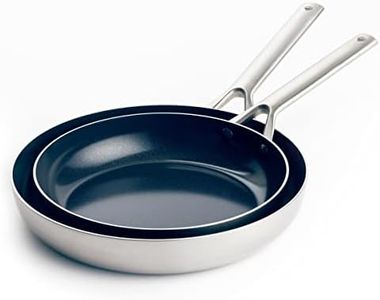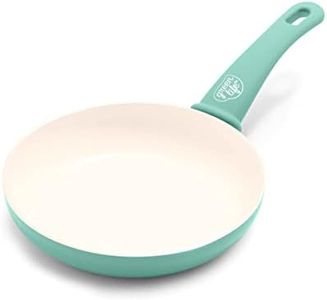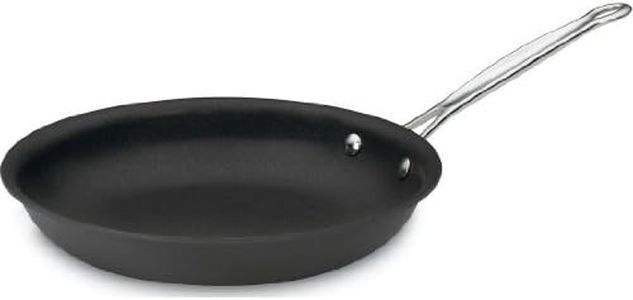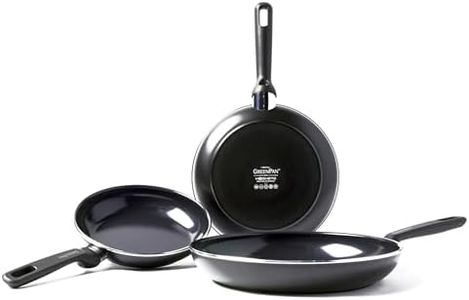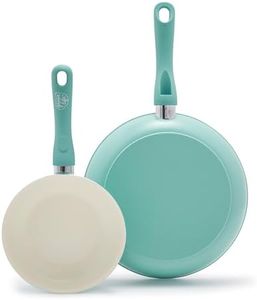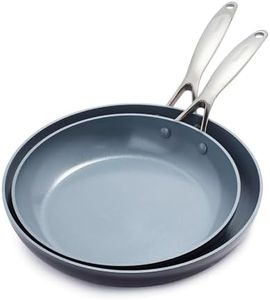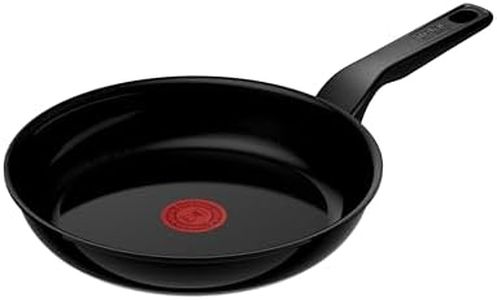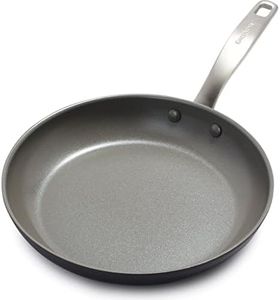We Use CookiesWe use cookies to enhance the security, performance,
functionality and for analytical and promotional activities. By continuing to browse this site you
are agreeing to our privacy policy
10 Best Ceramic Frying Pans
From leading brands and best sellers available on the web.Buying Guide for the Best Ceramic Frying Pans
Choosing the right ceramic frying pan involves understanding what makes these pans unique and how their features impact your everyday cooking. Unlike traditional nonstick pans, ceramic fry pans are coated with a non-toxic, mineral-based layer that resists sticking and often makes cleanup a breeze. Your choice should balance factors such as what and how often you cook, safety preferences, desired pan size, and maintenance expectations. By focusing on a few key specifications, you can make sure you get the pan best suited to your needs and lifestyle.Coating Material QualityCeramic frying pans are known for their nonstick coating, which is typically made from a sand-derived material called sol-gel. This coating is important because it affects how easy cooking and cleaning will be, as well as the pan's safety. Coatings can vary between basic and premium qualities. Basic coatings may offer good stick-resistance but wear out faster with frequent use, while higher-quality coatings tend to stay nonstick for longer and are more durable. If you cook daily or make foods that tend to stick, choose a pan with a reputation for a thicker, more robust ceramic layer.
Pan Thickness and WeightThe thickness and weight of a ceramic frying pan affect how evenly it heats up and how durable it feels. Thicker pans generally distribute heat better, preventing hot spots and helping you achieve even browning, while lighter pans may be easier to maneuver, especially for tasks like flipping or tossing food. Home cooks who value precise cooking or who prepare delicate foods benefit from a pan with a moderate to heavy build. If you prefer something lighter for easy handling or have limited wrist strength, a thinner, lightweight option is suitable, but keep in mind it may not heat as evenly.
Oven-Safe TemperatureMany ceramic pans are safe to use in the oven, but the maximum safe temperature varies. This is useful if you like to start cooking on the stove and finish dishes under the broiler or bake in the same pan. Some pans tolerate only moderate oven temperatures (like 350°F/175°C), while others withstand higher heat (up to 450°F/230°C or more). If you regularly make dishes that finish in the oven, check that the pan you choose can handle your typical cooking temperatures.
Handle Material and DesignHandles influence not just grip and comfort but also how the pan reacts to heat. Some handles stay cool on the stovetop, while others conduct heat and may require potholders. The material (such as stainless steel, silicone, or plastic) also determines whether the pan can go in the oven. For frequent oven use, a pan with metal handles is essential, but for stovetop-only cooking, comfort and grip may be higher priorities. Consider your cooking style—whether you need oven compatibility or just comfort for stovetop flipping.
Pan Size and ShapeCeramic frying pans typically range from about 8 to 12 inches in diameter. The right size depends on how many people you cook for and the types of dishes you prepare. Smaller pans (8–10 inches) are perfect for single servings, omelets, or quick tasks, while larger pans (10–12 inches) offer more space for families, batch cooking, or sautéing vegetables. Think about the size of your stove burners and storage as well—choosing a versatile mid-size pan is a good bet for most home cooks.
Compatibility with StovetopsNot all ceramic frying pans work on every type of stovetop. Some have bases compatible with induction cooktops, while others are only suitable for gas, electric, or ceramic stoves. If you use or plan to use an induction cooktop, be sure your pan specifically states this compatibility. For standard gas or electric stoves, most ceramic pans are fine, but always check the label to avoid disappointment.

